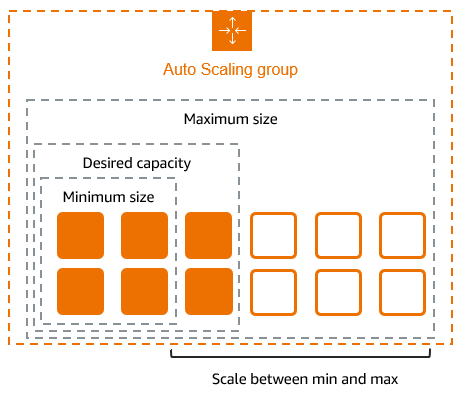How does auto scaling work in AWS
Auto scaling in AWS is a feature that allows you to automatically adjust the number of compute resources in your application based on traffic demand. This ensures that you have enough capacity to handle sudden increases in traffic, while also saving you money by scaling down when demand decreases.
So, how does auto scaling work in AWS? Let’s break it down:
1. Auto Scaling Groups
Auto scaling in AWS is managed through Auto Scaling Groups (ASGs). ASGs allow you to define the minimum and maximum number of instances that should be running at any given time. When the traffic demand increases, the ASG can automatically launch new instances to handle the load. Conversely, when demand decreases, the ASG can terminate instances to save on costs.
2. Scaling Policies
Scaling policies define when and how the ASG should scale in or out. There are two types of scaling policies in AWS: target tracking scaling and step scaling. Target tracking scaling adjusts the number of instances to maintain a specific metric, such as CPU utilization or request count per target. Step scaling, on the other hand, adds or removes instances based on predefined thresholds.
3. CloudWatch Alarms
Auto scaling in AWS relies on CloudWatch alarms to trigger scaling actions. CloudWatch allows you to set alarms on various metrics, such as CPU utilization, network traffic, or HTTP request count. When an alarm threshold is breached, the ASG can respond by launching or terminating instances to maintain the desired performance levels.
4. Load Balancing
A crucial component of auto scaling in AWS is load balancing. Load balancers distribute incoming traffic across multiple instances to ensure that no single instance becomes overwhelmed. By combining auto scaling with load balancing, you can ensure that your application remains available and responsive even during peak traffic periods.
5. Benefits of Auto Scaling in AWS
- Improved availability: Auto scaling ensures that your application can handle sudden spikes in traffic without downtime.
- Cost savings: By scaling up and down based on demand, you can optimize your resource usage and reduce costs.
- Performance optimization: Auto scaling allows you to maintain consistent performance levels even during fluctuations in traffic.
Overall, auto scaling in AWS is a powerful tool for optimizing the performance and cost efficiency of your applications. By intelligently adjusting the number of compute resources based on demand, you can ensure that your application remains reliable and responsive at all times.
